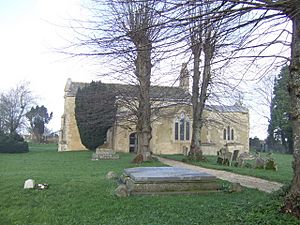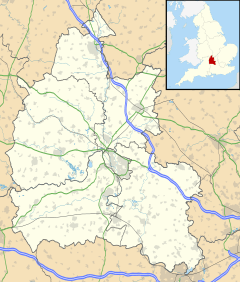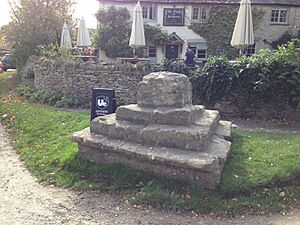Kelmscott facts for kids
Quick facts for kids Kelmscott |
|
|---|---|
 St George's parish church |
|
| Population | 198 (2011 Census) |
| OS grid reference | SU2499 |
| Civil parish |
|
| District |
|
| Shire county | |
| Region | |
| Country | England |
| Sovereign state | United Kingdom |
| Post town | Lechlade |
| Postcode district | GL7 |
| Dialling code | 01367 |
| Police | Thames Valley |
| Fire | Oxfordshire |
| Ambulance | South Central |
| EU Parliament | South East England |
| UK Parliament |
|
| Website | Kelmscott Village |
Kelmscott is a small village located right by the River Thames in West Oxfordshire, England. It's about 2 miles (3.2 km) east of a town called Lechlade. Since 2001, another small area called Little Faringdon became part of Kelmscott. In 2011, about 198 people lived in the village.
Kelmscott Manor: A Famous Home
Kelmscott Manor is a beautiful old house made of local stone. It was built around 1570 and made bigger in the late 1600s. This house was the country home of a very famous artist and writer named William Morris. He lived there from 1871 until he passed away in 1896.
Morris loved the house because it felt so real and untouched by modern changes. He found lots of ideas for his art and designs from the house and its natural surroundings. Today, Kelmscott Manor is looked after by the Society of Antiquaries of London. William Morris even named his home in London and his printing company, Kelmscott Press, after this special village.
St. George's Church: A Historic Place
The village is home to the Church of England parish church of Saint George. The main part of the church, called the nave, was built around 1190. The back part, called the chancel, is probably from the same time.
Later, around 1260, two side sections called transepts were added. In the 1400s, more windows were put in, including the large one at the very front of the church. This old church is considered a very important historic building.
William Morris's Resting Place
In the churchyard, you can find the tomb of William Morris. It was designed by his friend, Philip Webb. Morris even wrote about this church in his famous book, News from Nowhere. In the story, the main character visits the church for a big celebration.
The church is part of a larger group of churches in the area. Near the village pub, The Plough Inn, you can also see the old remains of a stone cross from the 1300s or 1400s.



